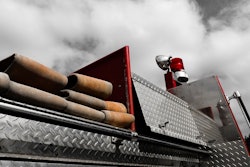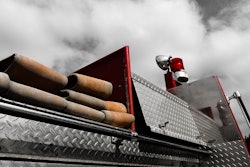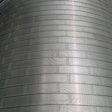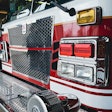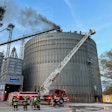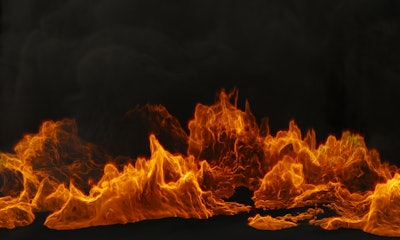
The U.S. Chemical Safety and Hazard Investigation Board (CSB) has released its final report into the deadly explosions and fires at Didion Milling's dry corn milling facility in Cambria, Wisconsin.
The explosion occurred in May 2017 and fatally injured five employees and seriously injured another 14. The incident also ultimately destroyed the facility, resulting in over $15 million in property damage.
The fatal incident
On the night of May 31, 2017, during normal mill facility operations, employees smelled smoke in parts of the mill. They investigated the source of the smoke and determined that it likely was located on the first floor of one of the buildings. While investigating milling process equipment, several employees heard an explosion and saw fire coming from piping on the rotary gap mill equipment discharge.
The employees began to evacuate and attempted to notify other employees of the emergency using their radios, but conflicting radio traffic caused confusion with the message. A fire spread through the process equipment via interconnected dust collection systems resulting in explosions in some of the dust collection equipment.
Secondary explosions subsequently occurred throughout the facility. The employees who were not within the immediate vicinity of the observed fire were unaware of the emergency and the need to evacuate prior to the explosions.
“Combustible dust explosions and fires can be deadly and incredibly destructive," said CSB chairperson Steve Owens. "The terrible tragedy at Didion was made even worse due to the lack of important safeguards in the design of the mill equipment and the lack of engineering controls at the facility that could have reduced the potential for serious fires and explosions. Our investigation also determined that Didion had a poor safety culture and inadequate leadership on safety issues that contributed to these tragic circumstances.”
Cause: Combustible corn dust inside process equipment
The CSB determined the cause of the dust explosions and collapsed buildings was the ignition of combustible corn dust inside process equipment, which transitioned to multiple explosions.
The CSB report emphasized that Didion did not recognize the hazards posed by combustible dust throughout the milling process. This resulted in Didion not understanding or addressing those combustible dust hazards.
The CSB’s investigation found that a key factor which contributed to the seriousness of the injuries was that Didion did not evaluate the risk of fires nor the need for flame-resistant personal protective equipment. Because of this, Didion did not provide personal protective equipment to employees in the mill, some of whom suffered burn injuries during the incident, including some fatal injuries.
The CSB’s investigation further found that the company failed to investigate prior incidents at the mill and implement corrective measures to prevent recurrence. Despite several previous fires, no effective corrective measures were taken to prevent fires from happening again.
"The CSB’s investigation found several issues which contributed to the severity of this incident," said Cruz Redman, investigator-in-charge. “They include a lack of hazard recognition, a failure to provide proper engineering controls, and a failure to implement safety management systems to mitigate combustible dust hazards which could ultimately impact the safety of all the workers at the facility.”
Insufficient safety regulations also at fault
The CSB’s report determined insufficient safety regulations which cover combustible dust operations.
While the Occupational Safety and Health Administration (OSHA) regulates some aspects of combustible dust hazards, OSHA does not have an overarching standard to manage the hazards presented by combustible dust. As a result, Didion was not required to implement safety management systems, such as those required for other highly hazardous materials.
As a result of its findings the CSB is issuing more than a dozen recommendations to Didion, the National Fire Protection Association (NFPA), and OSHA.
The CSB is recommending that Didion develop a comprehensive combustible dust safety program, which will include management of change, safety information management, fugitive dust management, management of audits, incident investigations, dust hazard analyses, personal protective equipment and emergency preparedness.
The CSB also is recommending that OSHA develop a national regulation for industries that handle combustible dust, as well as increase follow-up inspections when combustible dust hazards have been identified at facilities. Similarly, the CSB is calling on the National Fire Protection Association (NFPA), to update its combustible dust standards to include more comprehensive requirements for dust hazard analyses, incident investigations, and management of change.
Jury convicts Didion officials in deadly explosion
On October 13, a federal jury in Madison, Wisconsin, convicted current and former Didion Milling officials of workplace safety, environmental, fraud and obstruction of justice charges for the Cambria facility explosion in May 2017.
- Didion Milling vice president of operations Derrick Clark was convicted of conspiring to falsify documents, making false Clean Air Act compliance certifications as Didion’s “responsible official” and obstructing the OSHA investigation of the explosion at the corn mill by making false and misleading statements during a deposition.
- Former Didion Milling food safety superintendent Shawn Mesner was convicted of participating in a fraud conspiracy against Didion Milling’s customers and conspiring to obstruct and mislead OSHA for his role in falsifying sanitation records used at Didion to track the completion of cleanings designed to remove accumulations of corn dust at the mill.
- The jury also acquitted former Didion Milling environmental manager James Lenz of charges relating to falsifying environmental records and conspiring to make false statements and obstruct agency proceedings.
Sentencing will be held at a later date.
The company also agreed in October to a plea deal on federal charges that employees falsified records for years leading up to a fatal dust explosion.
The deal calls for Didion to pay a $1 million fine in addition to $10.25 million to the estates of the five workers killed the explosion.



